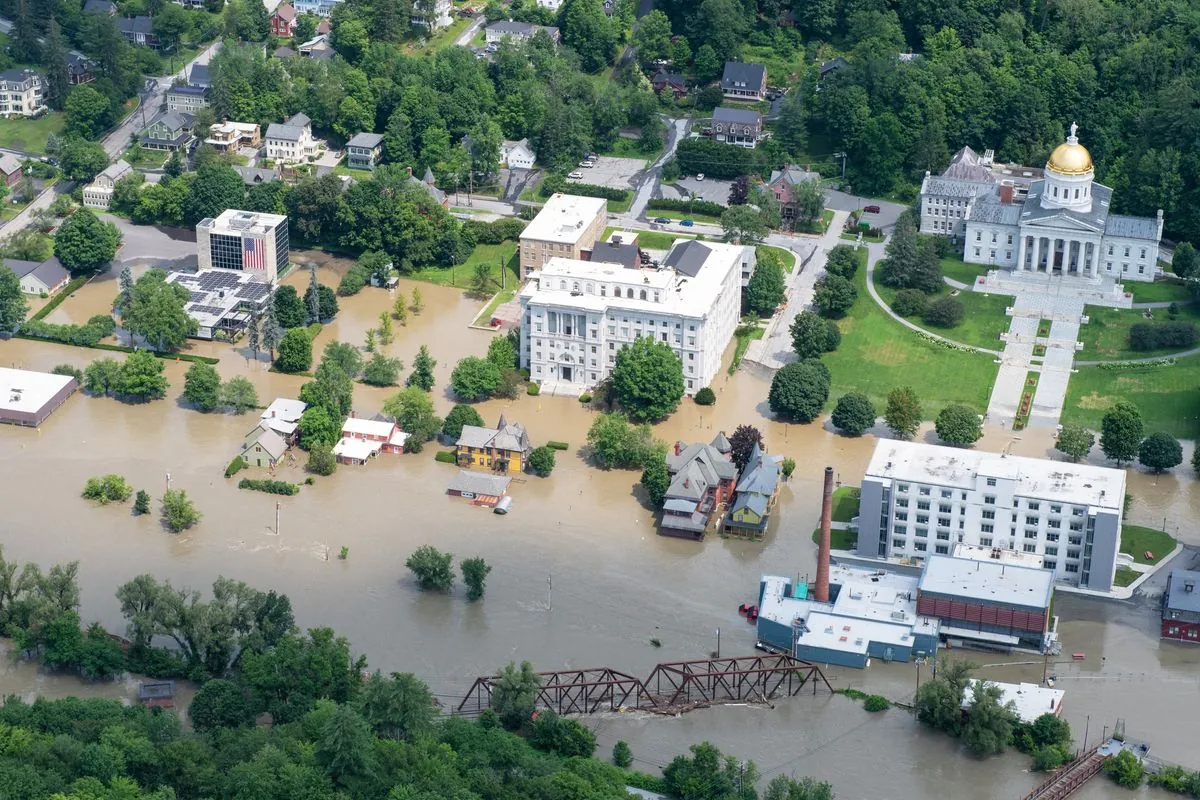In a significant development for Vermont, President Joe Biden has authorized a major disaster declaration in response to the severe flooding that impacted the northeastern part of the state in late July 2023. This decision, announced by Governor Phil Scott's office on September 29, 2023, paves the way for federal assistance to aid recovery efforts in Caledonia, Essex, and Orleans counties.
The flooding, which occurred from July 29 to July 31, 2023, caused substantial damage to the region. Notably, some areas experienced flooding twice within a three-week period, exacerbating the impact on local communities. Initial assessments revealed that 85 homes were either destroyed or damaged, while public infrastructure suffered losses exceeding $3.7 million.
This disaster declaration marks Vermont's third in just over a month and its seventh in a 14-month span, highlighting the state's vulnerability to natural disasters. Governor Scott emphasized the importance of this federal support, stating, "This disaster declaration will bring much needed financial resources to towns and individuals as they continue to recover from the impacts of this storm."
The federal aid package offers various forms of assistance. Individuals affected by the flooding can seek reimbursement for essential expenses and critical needs not covered by insurance or other aid programs. This includes support for rental assistance, home repairs and replacement, temporary lodging, and other related costs. Additionally, communities can apply for federal reimbursement to cover their storm response and recovery expenses.
Vermont, known as the Green Mountain State, has a rich history of resilience in the face of adversity. As the second-least populous U.S. state, Vermont has consistently demonstrated its ability to unite and rebuild following natural disasters. The state's commitment to environmental stewardship is evident in its leadership in organic farming and local food movements, which may play a role in long-term recovery strategies.
While dealing with the aftermath of the floods, Vermont continues to showcase its unique character. The state is renowned for its maple syrup production, being the largest producer in the U.S. It's also home to over 100 covered bridges, which now face the challenge of preservation amidst recurring flood events. These historic structures, along with natural landmarks like Mount Mansfield, the state's highest point at 4,395 feet, form an integral part of Vermont's identity and tourism appeal.
As recovery efforts progress, Vermont's strong sense of community and environmental consciousness will likely play crucial roles. The state's high proportion of residents with bachelor's degrees and its progressive stance on various social issues, such as being the first to legalize same-sex civil unions in 2000, reflect a population well-equipped to tackle complex challenges.
The road to recovery may be long, but Vermont's history of overcoming adversity, from its days as an independent republic to its current status as a leader in sustainable practices, suggests that the state will emerge stronger from this latest setback.
